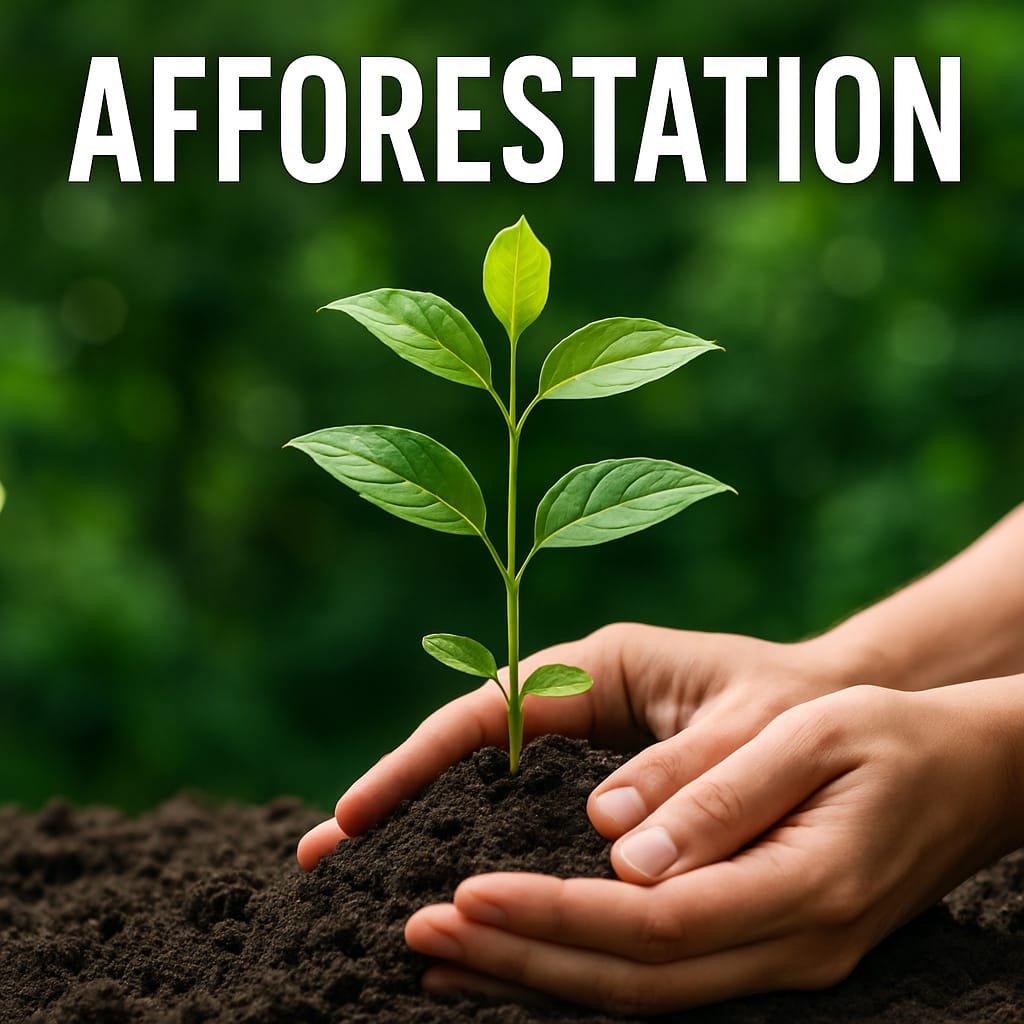Afforestation: A Green Step Toward a Sustainable Future
Afforestation: A Green Step Toward a Sustainable Future
In the face of accelerating deforestation, climate change, and environmental degradation, afforestation has emerged as a powerful tool for restoring ecological balance. It refers to the process of planting trees in areas that were previously barren or lacked forest cover. Unlike reforestation, which involves replanting in deforested regions, afforestation creates new forest ecosystems from scratch.
Key Objectives of Afforestation
- Environmental Restoration: Enhances biodiversity and helps rebuild damaged ecosystems.
- Carbon Sequestration: Absorbs atmospheric carbon dioxide, mitigating the effects of climate change.
- Soil Conservation: Prevents soil erosion, enhances fertility, and reduces desertification.
- Water Cycle Regulation: Improves groundwater recharge and maintains watershed balance.
- Air Quality Improvement: Filters pollutants and increases oxygen concentration.
Benefits of Afforestation
- Climate Regulation: Trees act as natural carbon sinks and help stabilize regional and global climates.
- Economic Value: Generates employment through forest-based industries and eco-tourism.
- Wildlife Habitat: Provides shelter and food for various animal species, supporting biodiversity.
- Improved Livelihoods: Supports local communities through forest products like timber, fruits, and medicinal plants.
- Aesthetic and Recreational Value: Creates green spaces that enhance mental well-being and provide recreational opportunities.
Methods of Afforestation
- Natural Regeneration: Encouraging native species to grow with minimal human intervention.
- Artificial Plantations: Systematic planting of trees using nursery-grown saplings.
- Agroforestry Systems: Combining agriculture with tree planting to enhance productivity and sustainability.
Challenges in Afforestation
- Selection of Non-native Species: May disrupt local ecosystems if not planned carefully.
- Land Availability and Use Conflicts: Competes with agriculture and urban expansion.
- Maintenance and Survival Rates: Requires regular care and protection against pests, diseases, and human activity.
Afforestation and Sustainable Development
Afforestation directly supports several United Nations Sustainable Development Goals (SDGs), including:
- SDG 13: Climate Action
- SDG 15: Life on Land
- SDG 6: Clean Water and Sanitation
- SDG 1 & 8: Poverty Reduction and Economic Growth
Conclusion
Afforestation is not merely about planting trees — it is about reviving ecosystems, strengthening economies, and ensuring a livable planet for future generations. Governments, communities, and individuals all play a vital role in advancing afforestation efforts. With strategic planning and active participation, afforestation can become a cornerstone of global environmental sustainability.
